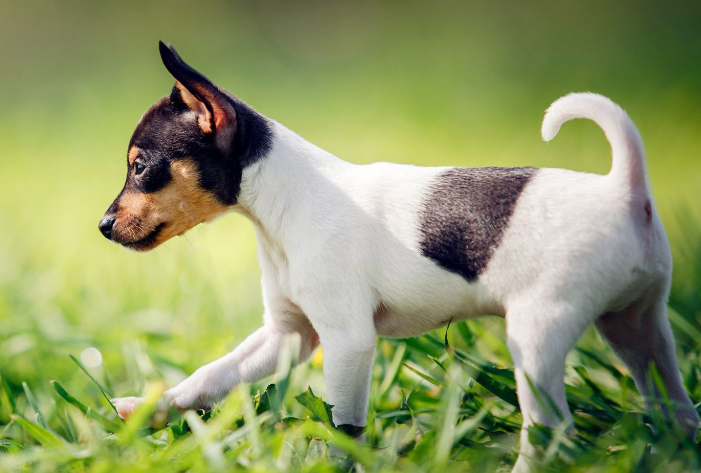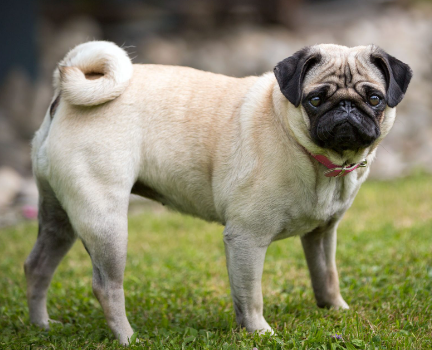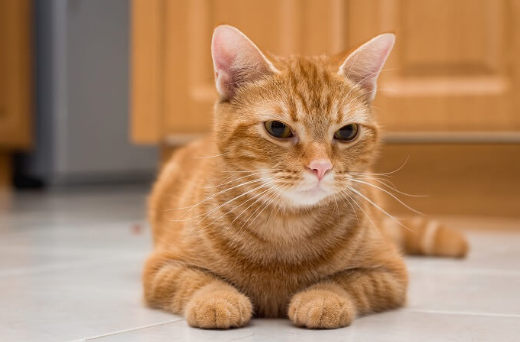The Welsh Terrier, originating from Wales, has a rich history as a skilled hunter of foxes, otters, and badgers. This small, Airedale-like breed is known for its spirited and lively demeanor. Its coat is tough and wiry, typically black and tan, standing at around 15 inches (38 cm) tall and weighing approximately 20 pounds (9 kg). With its wide-set eyes and flat skull, the Welsh Terrier possesses a unique and intelligent expression.
- HEIGHT: 15 inches
- WEIGHT: 20 to 22 pounds
- COAT: Dense, hard, and wiry outer coat with a soft undercoat
- COAT COLOR: Tan and black
- LIFE SPAN: 12 to 15 years
- ORIGIN: Wales
Breed Charactariseity
The Welsh Terrier embodies the quintessential alertness and spirited nature inherent in terriers, yet it maintains a slightly more composed demeanor, described by enthusiasts as “game, not quarrelsome.” Bred originally for confronting formidable adversaries like badgers and otters, this breed exudes resilience and fearlessness.
With a sturdy, compact build, clad in a snug black-and-tan coat, and sporting a distinctive rectangular head adorned with folded ears and a charming beard, Welsh Terriers adhere to the timeless standards of Britain’s leggy terrier lineage. Standing at approximately 15 inches tall at the shoulder, they surpass the Lakeland Terrier in size but remain notably smaller than the formidable Airedale.
Despite their characteristics, all three breeds bear a familial resemblance, tracing their ancestry back to the ancient Old English Black and Tan Terrier, considered the progenitor of various British terriers, including these esteemed breeds.
| General Health: 5Point | Energy Level: 5Point |
| Shedability: 1Point | Trainability: 3Point |
| Intelligence: 5Point | Tendency to Chew: 3Point |
| Size: 2Point | Family and kid-friendliness: 5Point |

History of the Welsh Terrier
Though the precise origins of the Welsh Terrier remain elusive, it is esteemed as one of the oldest terrier breeds. Hailing from Wales, historical records allude to the presence of black and red terriers dating back to the 15th century.
During the 18th century, these canines gained popularity, particularly in the rugged terrains of Wales, where they endeared themselves to farmers and hunters of foxes, otters, rodents, and badgers. The demanding task of extracting an aggressive badger from its burrow necessitated a brave, determined, and robust dog, qualities that the Welsh Terrier evidently possessed.
As the 19th century unfolded, the Welsh Terrier gained further prominence, evolving into a scruffy yet captivating breed tailored for the show ring. Initially grouped under the umbrella term “Old English Terriers” alongside similar terrier varieties, their distinct identity gradually emerged.
Recognition by the Kennel Club in the United Kingdom in 1887 marked a pivotal moment for the Welsh Terrier, coinciding with its introduction to the United States during this period.
Though Welsh Terriers remain relatively rare, those captivated by the allure of this spirited and distinctive breed often become devoted enthusiasts. Notable admirers include U.S. President JFK, who owned a Welsh Terrier named Charlie, and U.K. Prime Minister Clement Attlee, both avid aficionados of the breed.
Appearance
As crossbreeds, cookies lack a standardized appearance, making it difficult to define a “strain standard” for them. In fact, Yorkie puppies from the same litter can exhibit striking differences in appearance. However, each parent breed contributes distinctive traits that may manifest in their offspring.
Dachshund pups, affectionately dubbed “links” or “Weiner” dogs, are characterized by their compact stature and short legs supporting a lengthy, barrel-shaped body. Conversely, Yorkies rank among the smallest terriers, sporting either long, glamorous, silky coats or a charming “puppy dog cut.”
Cookie coats can exhibit a wide array of colors, patterns, and lengths. Dachshunds alone display variations in smooth, wire-haired, or long-haired coats, featuring diverse colors and patterns. Meanwhile, Yorkies typically boast silky coats in color combinations such as black and tan, black and gold, blue and tan, and blue and gold. Common coat colors for Yorkies include red, black, brown, and blue. Both parent breeds shed minimally and have moderate grooming needs.
Despite the mix of traits inherited, fully grown cookies typically remain small in size. Dachshunds range from 11 to 32 pounds, while Yorkshire Terriers are diminutive, generally weighing under 7 pounds. Crossbreeds of these two breeds typically fall within a weight range of 5 to 12 pounds, with heights varying from 5 to 10 inches.
Temperament
The Welsh Terrier embodies the energy of the Energizer Bunny—cute, compact, cuddly, and agile. Originally bred as working dogs, Welsh terriers aided in covering cropland and hunting by tracking and pursuing prey.
Their innate prey drive remains strong, leading them to naturally chase small creatures like lizards, squirrels, and even cats. Due to this instinct, the Welsh Terrier Club of America (WTCA) advises against allowing them off-leash in unfenced areas, regardless of their training level.
Given their intelligence, mental stimulation is crucial for Welsh terriers. Activities like leisurely walks to explore new scents or engaging them with puzzle toys can provide the mental workout they need.
“As with other terriers, Welsh terriers are self-assured, determined, and lively,” says Linda Simon, MVB, MRCVS, consulting veterinarian at FiveBarks. “They thrive on activity and are always eager for stimulation.“
Without sufficient mental and physical exercise, Welsh terriers may develop behavioral issues such as excessive barking, digging, or chewing. However, with proper care and attention, they can be calm and affectionate companions at home. A tired Welshie will gladly curl up for a cozy snuggle to end the day!
Personality
The Welsh Terrier embodies a cheerful and intelligent demeanor, delighting in playful activities while remaining affectionate and tender. With an energetic and spirited nature, this breed is both devoted to its family and sociable with others.
Unlike some terrier breeds, the Welsh Terrier tends to have a milder temperament, making it an excellent companion for families, especially those with children. While they can display independence, particularly in training, their inherent zest for life and affectionate nature are typically endearing qualities.
The temperament of a Welsh Terrier puppy is influenced by various factors including genetics, upbringing, and socialization. Opting for a puppy that demonstrates a balanced disposition, neither overly aggressive nor excessively shy, is advisable.
Meeting at least one parent, usually the mother, can offer insights into the puppy’s potential temperament. Additionally, observing siblings or other relatives of the parents can provide further context.
Early socialization is vital for Welsh Terrier puppies, exposing them to diverse experiences, people, and environments to ensure they develop into well-rounded adults. Enrolling them in puppy kindergarten classes and regularly introducing them to visitors, busy places, and different settings helps refine their social skills from an early age.
Health
Welsh Terriers are generally robust, but like all breeds, they may be susceptible to certain health issues. While not every Welsh Terrier will develop these conditions, it’s crucial to be aware of them when considering this breed.
When acquiring a puppy, it’s essential to choose a reputable breeder who can provide health clearances for both parents. These clearances demonstrate that the dogs have been screened for and deemed free of specific health concerns.
For Welsh Terriers, health clearances from organizations like the Orthopedic Foundation for Animals (OFA) for hip dysplasia (with a fair or better rating), elbow dysplasia, hypothyroidism, and von Willebrand’s disease are crucial. Additionally, certifications from Auburn University for thrombophilia and the Canine Eye Registry Foundation (CERF) verifying normal eye health are important. These clearances can be verified through the OFA website (offa.org).
Allergies are a common issue in dogs, including Welsh Terriers. They can manifest as food allergies, contact allergies (response to substances like bedding or flea products), or inhalant allergies (triggered by airborne allergens). Treatment varies depending on the type of allergy and may include dietary changes, medication, and environmental modifications.
Epilepsy, a neurological disorder characterized by seizures, can affect Welsh Terriers. While it can have a genetic component, it’s not always inherited. Treatment involves veterinary management to control and reduce the frequency of seizures.
Glaucoma, a painful condition resulting from increased pressure within the eye, can lead to vision loss and blindness if left untreated. It may have a hereditary component or be caused by other eye issues. Prompt veterinary intervention is crucial to preserve vision and alleviate discomfort.
Hypothyroidism, a condition affecting the thyroid gland, can lead to various symptoms including hair loss, obesity, and skin problems. Treatment typically involves medication and dietary management to regulate thyroid function.
Regular veterinary check-ups and prompt attention to any concerning symptoms are essential for maintaining the health and well-being of Welsh Terriers.

Care
Training a Welsh Terrier can be a test of wills, with both the trainer and the determined Terrier vying for control. Known for their independent nature, Welshies are not the most obedient breed; they’re far from the eager-to-please Golden Retriever and often push boundaries.
Positive reinforcement and consistency are key when training a Welsh Terrier. Harsh corrections can backfire, leading to resistance rather than cooperation. Their natural stubbornness can be alleviated with engaging training sessions that include games and varied activities, keeping boredom at bay.
Socialization is vital for Welsh Terriers to prevent issues with aggression towards other dogs and animals. Proper training and early exposure to different situations can help mitigate this tendency, and once socialized, Welshies typically get along well with other dogs.
As high-energy dogs, Welsh Terriers require regular exercise to prevent boredom-induced mischief. A daily routine of 30 to 60 minutes of activity, whether playing in the yard, going for walks, or engaging in interactive play indoors, is necessary. Toys can also help channel their energy, and they make enthusiastic jogging companions when kept on a leash due to their strong prey drive.
Consistent crate training is recommended to prevent accidents and provide a safe space for the Welshie to rest. However, they should not be left in the crate for extended periods, as they thrive on human interaction and can become distressed if isolated for too long.
While Welsh Terriers can adapt to apartment living, their tendency to bark may pose challenges in noise-restricted environments. A small house with a fenced yard is preferable, allowing them space to roam and explore while remaining close to their beloved human companions.
Best Food For
- ORIJEN Original Grain-Free Dry Dog Food
- Stella & Chewy’s Chewy’s Chicken Dinner Patties Freeze-Dried Raw Dog Food
- American Journey Salmon & Sweet Potato Recipe Grain-Free Dry Dog Food
- ORIJEN Puppy Grain-Free Dry Puppy Food
Feeding
The recommended daily amount of high-quality dry food for a Welsh Terrier is typically 3/4 to 1 cup, divided into two meals. However, the specific dietary needs of each adult dog vary based on factors such as size, age, body condition, metabolism, and activity level. Just like people, dogs are individuals, and their food requirements differ accordingly.
It’s essential to adjust the quantity of food based on your dog’s activity level; a highly active dog will need more food than a sedentary one. Additionally, the quality of the dog food you choose plays a significant role in your overall health and nutritional intake. Higher-quality food provides better nourishment, requiring lesser quantities to fulfill their dietary needs.
Maintain your Welsh Terrier’s optimal weight by measuring their food portions and feeding them twice a day rather than leaving food available at all times. Regularly assess your dog’s body condition using the eye test and the hands-on test. A visible waistline and being able to feel the ribs without pressing too hard indicate a healthy weight. If unsure, consult your veterinarian for guidance on adjusting your dog’s diet and exercise routine.
For more information on feeding your Welsh Terrier, refer to the guidelines on selecting the right food, feeding puppies, and feeding adult dogs.
Grooming
Welsh Terriers boast a low-maintenance grooming regimen, requiring only a weekly brushing and occasional clipping or hand-stripping to maintain their coats. As with all dog breeds, regular nail trimming and teeth brushing are also essential.
While no breed is entirely non-shedding, the Welsh Terrier’s double coat helps minimize excessive shedding by trapping loose hair. This characteristic makes them an appealing choice for individuals with allergies, as they are considered hypoallergenic due to their reduced shedding.
Training
Welsh Terriers exhibit intelligence alongside a streak of stubbornness and independence. Employing positive training methods is recommended, coupled with ample patience and treats to motivate them.
Due to their assertive personalities, Welsh Terriers may not always get along with other dogs, requiring careful introductions, particularly in multi-dog households. While some owners have successfully integrated them into homes with cats, their strong prey drive suggests they are better suited to environments without smaller pets.
Given their hunting instincts, it’s crucial to prioritize training a reliable recall command to ensure they remain under control when off-leash. Additionally, managing alert barking tendencies is important, as Welsh Terriers are inclined to vocalize frequently.
Exercise
Welsh Terriers are playful dogs who thrive on regular exercise and outdoor activities. Surprisingly, research reveals that one in five Welsh Terrier owners fail to provide consistent exercise for their canine companions, a neglect that can lead to long-term health issues.
However, incorporating exercise into your Welsh Terrier’s routine doesn’t have to feel like a chore. There are numerous enjoyable and diverse ways to keep your furry friend active and healthy.
Walking, Running, and Jogging
While it may seem obvious, one of the simplest ways to exercise your Welsh Terrier is by taking them for a walk. Your dog will likely become visibly excited at the sight of their leash, indicating their enthusiasm for this classic form of activity. While a brisk walk is beneficial, consider incorporating short runs or jogs to add variety and intensity to your exercise regimen. Donning appropriate attire, you can also enjoy some extra physical activity yourself while bonding with your Welsh Terrier.
Exploring New Terrain
Varying your walking routes or exploring different areas of your neighborhood or local park can keep both you and your Welsh Terrier engaged and stimulated. Consider taking detours around scenic ponds or traversing unfamiliar paths to break up the monotony of routine walks and provide your dog with new sights and smells to enjoy.
By making exercise enjoyable and varied, you can ensure that your Welsh Terrier remains active, healthy, and fulfilled while strengthening the bond between you and your beloved companion.
Adoption Center
Other Dog Breeds and Further Research
FAQs
Is a Welsh Terrier a Good Family Dog?
Welsh Terriers are unique family members for the right people, offering fun capers and mettlesome personalities in diurnal life. still, this strain is generally independent and does not always do well with youthful children, is best- suited for educated possessors.
Do Welsh Terriers Bark a Lot?
Welsh Terriers are prone to warn barking, meaning they let their possessors know when unusual circumstances or nonnatives are present. Your canine may profit from training against inordinate barking during puppyhood to discourage bad habits in the future.
Do Welsh Terriers Shed Hair?
While no canine is truly hypoallergenic, Welsh Terriers have been considered a hypoallergenic strain thanks to their veritably low-slipping nature. Their double fleeces are soft underneath and coarse on the surface, generally catching slapdash hair before it falls












2 thoughts on “Welsh Terrier Dog Breed Full Information || Animalatoz.com”